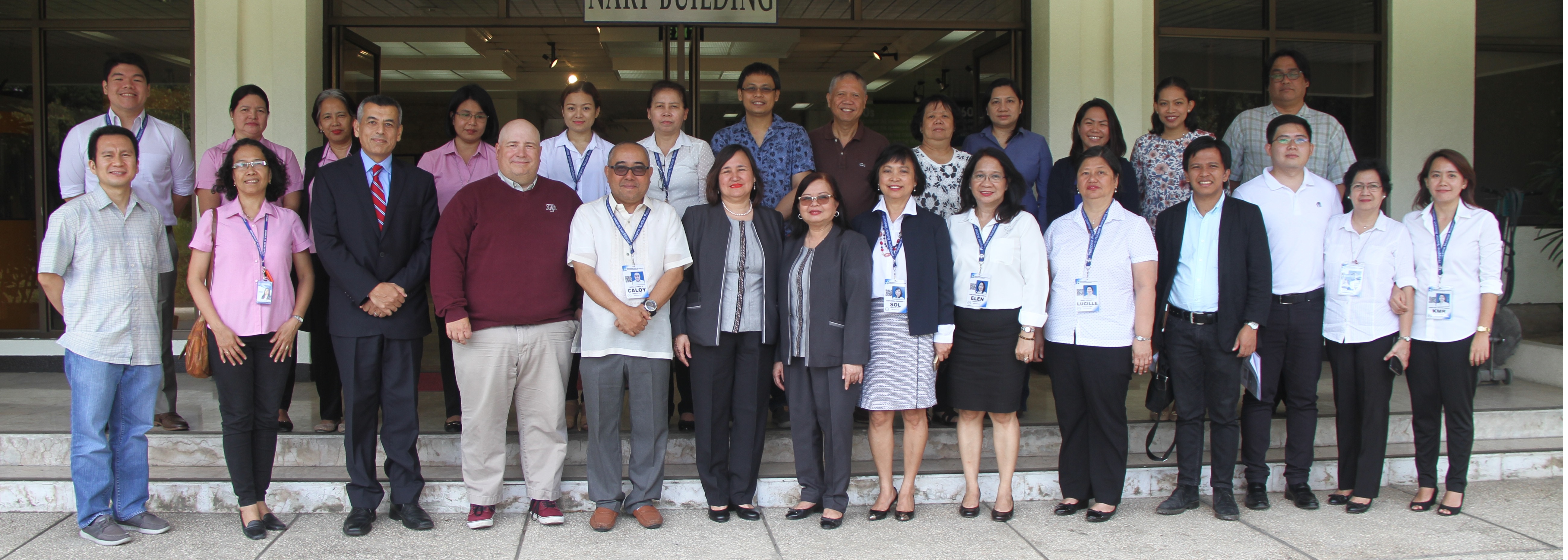
During the Consultation Meeting on Development of Nuclear Engineering Education Programs in the Philippines representatives from various universities and colleges in the Philippines are joined by PNRI Director Dr. Carlo Arcilla (1st row, 5th from left), DOE Energy Policy and Planning Bureau Director Ms. Carmencita Bariso (1st row, 7th from left), DOE Administrative Services Director Ms. Angelina Manga (1st row, 6th from left). Also in photo are IAEA experts Mr. Walid Metwally of the University of Sharjah, United Arab Emirates and Mr. Cable Kurwitz of Texas A&M University, United States of America (1st row, 3rd and 4th from left, respectively), as well as officials and researchers from PNRI and DOE.
PNRI to Help Bring Back Nuke Engineering Course in the Academe
As the Philippines prepares for a national decision on whether or not to engage in a nuclear power program, several of the country’s leading universities and colleges were consulted for the re-establishment of a nuclear engineering course and other related academic programs with assistance from the Department of Science and Technology – Philippine Nuclear Research Institute (DOST-PNRI) and the Department of Energy (DOE).
During the consultation meeting at PNRI from June 18 to 21, officials from PNRI and DOE as well as experts from the International Atomic Energy Agency (IAEA) met with members of the academe in the fields of science and engineering to discuss the Philippines’ current education situation and to meet the expected human resources demands of a future nuclear power program.
Representatives present are department heads and professors from the University of the Philippines – Diliman, Ateneo de Manila University, De La Salle University, University of Santo Tomas, Mapua University, Central Luzon State University, University of the Philippines – Los Baños, University of San Carlos and Mindanao State University – Iligan Institute of Technology.
Human resources development is one of the Philippines’ current challenges for nuclear power. The meeting aims to revive the nuclear engineering program at the tertiary level, as the last batch of nuclear engineers graduated in 1984 from the University of the Philippines. The program ceased along with the shifting priorities of the government away from nuclear power and the mothballing of the Bataan Nuclear Power Plant in 1986.
Aside from addressing the lack of nuclear engineers, the IAEA emphasized the role of two-year academic programs in producing technicians and other support staff, who actually make up the bulk of the personnel necessary in building and operating nuclear power plants.
IAEA experts also proposed the “nuclearization” of several engineering, science and technical courses, especially the inclusion of basic nuclear science and radiation protection, which will allow the personnel to carry out their conventional fields of expertise in a nuclear or radiation-related setting.
Beyond nuclear power, PNRI hopes that the recent interest of the academic sector in nuclear science will also extend to other nuclear and radiation applications, especially given the expertise of certain universities and colleges in various fields of study such as in agriculture and medicine.
In the meantime, PNRI is also strengthening its own plethora of nuclear training courses. The Nuclear Training Center conducts more than 20 training courses annually for hundreds of professionals as well as undergraduates, covering topics such as nuclear technology, radiation safety and protection and non-destructive testing, to name a few.
The IAEA experts and meeting participants also visited some of the PNRI facilities. Among these are the neutron sources research facilities such as the Philippine Research Reactor – 1, which now houses the development of the Subcritical Assembly for Training, Education and Research (SATER), the recently established PNRI Neutron Laboratory, the Technetium-99m Generator Facility for medical procedures, and radiation processing facilities such as the Cobalt-60 Multipurpose Irradiation Facility and the Electron Beam Irradiation Facility.












































